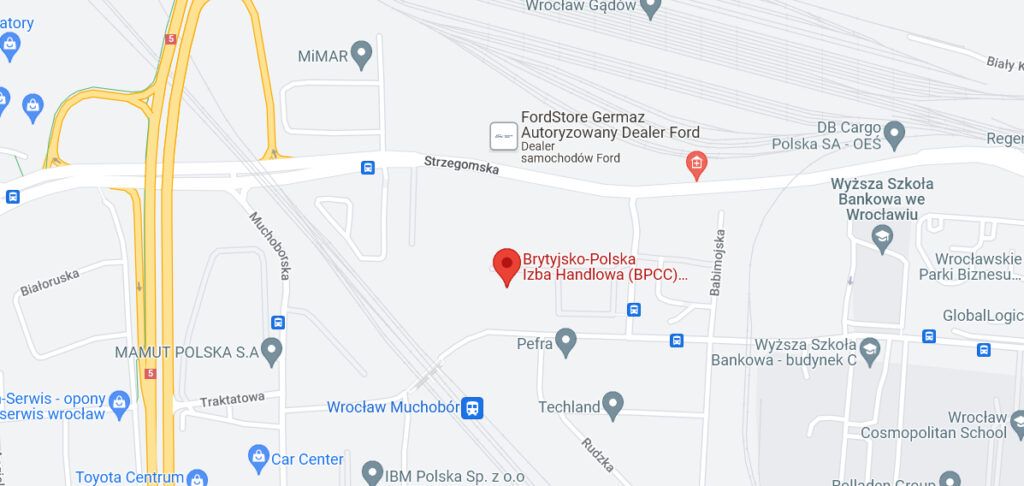
By Wioletta Bratoszewska, senior corporate banker – Real Estate

European climate policy will force a transformation of the construction and real estate sector towards reducing greenhouse gas emissions in the coming years. HSBC wants to be part of this change.
To achieve the EU’s ambitious net-zero target by 2050, a holistic approach that considers greenhouse gas emissions from all sources is required. This also applies to the construction and real-estate sector. For it is only by understanding the complexity of the problem that we can seek solutions, identify the right methods for reaching the target and, consequently secure financing. At HSBC, we see the changes faced by the construction and real-estate sector as an opportunity.
In 2021, we committed to a complete phase-out of coal project financing in the EU and the OECD countries by 2030, and globally by 2040. Already from 2021, we are not financing new coal projects. At the same time, globally HSBC plans to fund between $750 billion and $1 trillion in projects leading to sustainable development by 2030. These funds are intended to support our clients to realise their sustainability ambitions, including the construction industry.
As part of our transition to net zero, we are increasing our commitment to financing sustainability projects. We have made $126.7 billion cumulative progress since 2020 on our ambition to provide and facilitate sustainable finance and investment.
The decarbonisation of real estate
According to European Commission data, construction and real-estate use, especially those related to heating, currently generate around 36% of total energy-related greenhouse gas emissions in the EU. It is therefore a more significant source of greenhouse gases than transport, which has a share of around 25%.
It can be expected that the topic of reducing CO2 emissions from buildings will become as important as that of transport in the coming years. Indeed, the EU invariably intends to pursue its ambitious climate policy goals. The European Commission is already acknowledging that decarbonation of buildings is critical in the 2C pathway.
Importantly, emissions from buildings are directly related to the amount of fuel burned. The introduction of new building technologies, as well as the renovation of the existing building stock, will therefore contribute to achieving the EU’s climate goals. Saving energy in the building sector is important, as buildings are the single largest energy consumer in Europe. Heating, cooling and domestic hot water account for 80% of the energy that we consume.
The EU has proposed to move from the current nearly zero-energy buildings to zero-emission buildings by 2030. Zero-emission standards should be met by 2028 by all buildings constructed for public use. The requirement will be extended to all new buildings by 2030.
According to the Energy Performance of Buildings Directive (Directive 2018/844/EU), designers of new buildings will be obliged to implement solutions to significantly reduce energy consumption. Requirements include, for example, the possibility of installing solar electricity generation facilities. New buildings are to be designed to offer the greatest possible potential for the development of photovoltaics. As early as in 2026, solar installations are to be mandatory for all new public and non-residential buildings with useful floor area over 250 m2. Three years later, this requirement will also extend to all new residential buildings.
Benefits for the economy
Around 70% of single-family residential buildings in Poland and many multi-family and public buildings do not currently meet energy efficiency standards. The high energy prices – which we are facing in the 2022/23 heating season – will certainly provide an incentive for many to seek savings.
A growing trend may be passive construction. Until a few years ago, zero-emission construction was marginal in the EU. According to Eurostat, in 2014 (the latest information available), the share of so-called NZEB (net zero emission buildings) in residential construction in Poland was only 0.13%. We did not stand out particularly from the EU as a whole, where the average share of such buildings was only marginally above 0.2%. The largest number of zero-emission buildings was built in Austria (0.54% of the total).
Tangible effects in reducing energy consumption and thus CO2 emissions can be expected from existing buildings. In 2030, all non-residential buildings in the EU should use less energy than the 15% of the least energy-efficient buildings used on average in 2020. In other words, all non-residential buildings should be above the average set by the “worst 15%.” EU countries were also obliged to come up with ideas for making single-family buildings more energy efficient. By mid-2026, EU countries will have to develop strategies dedicated to this.
These measures will benefit the Polish economy in the long term. Lower energy demand for home heating will reduce the demand for hard coal and thus also reduce costs for citizens. According to the Statistics Poland (Polish central statistical office), in 2020 (the latest information available), households in Poland alone consumed 8.6 million tonnes of coal. The Statistics Poland data shows that coal consumption by households has generally been declining in recent years – in 2016, for example, it was almost 10.4 million tonnes. The level of coal consumption was related to the weather – winters have generally been milder in recent years – but also to Poles’ increasing use of alternative energy sources, especially photovoltaics.
Interesting times
Adapting to change, we also face a change in thinking about architecture. One example is the concept of the so-called New European Bauhaus, which refers to the modernist trends in architecture that emerged in the 1920s. The New Bauhaus assumes that the model buildings being constructed – including single-family homes – are to be built in an environmentally sustainable manner. In addition to energy efficiency, they are to be distinguished by asceticism.
There is no doubt that interesting changes are ahead for the construction and real-estate industry. The challenge is not only to reduce CO2 emissions from existing buildings. In accordance with the life-cycle concept, indirect emissions are also considered. In the case of the real-estate sector, this includes the production of building materials or the construction of buildings themselves. The challenge will therefore also be to adapt the building materials industry to the principles of a closed loop economy, by reducing waste production as much as possible. HSBC will actively participate in this transformation. We are leading the Finance to Accelerate the Sustainable Transition-Infrastructure (‘FAST-Infra’) initiative, which in November 2021 launched the Sustainable Infrastructure (SI) label – a consistent, globally applicable labelling system designed to identify and evaluate sustainable infrastructure assets.
The use of the label will help to address the estimated $6.9 trillion of annual investment that the OECD says is required until 2030 to meet the sustainable infrastructure objectives of the Paris Agreement. We helped conceive the FAST-Infra initiative, working with the IFC, OECD, the World Bank’s Global Infrastructure Facility and the Climate Policy Initiative, under the auspices of the One Planet Lab.




























